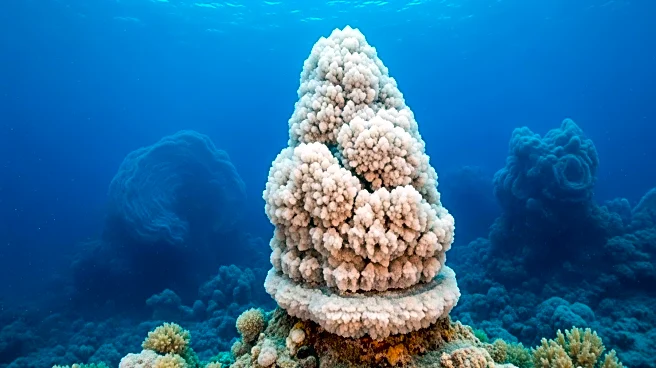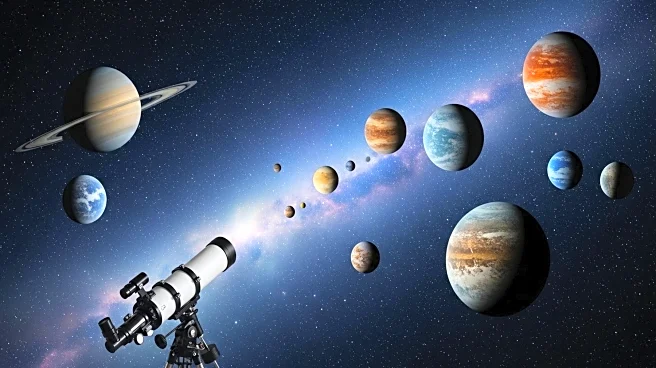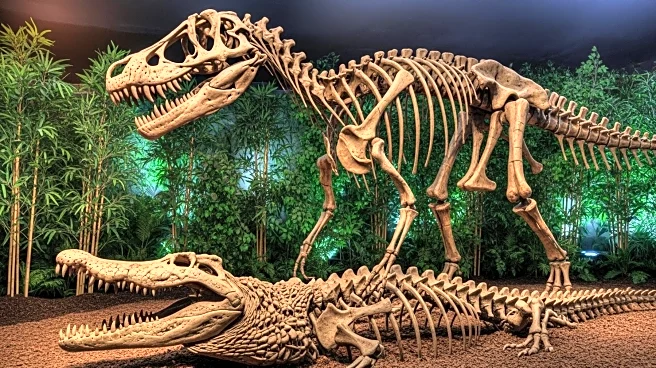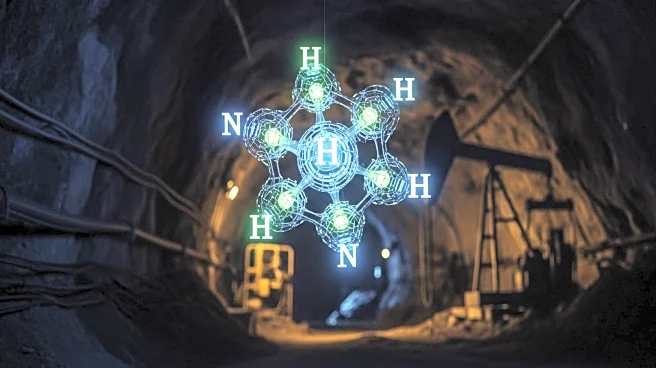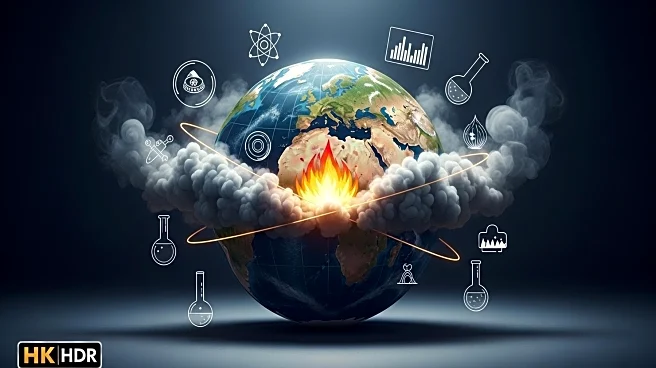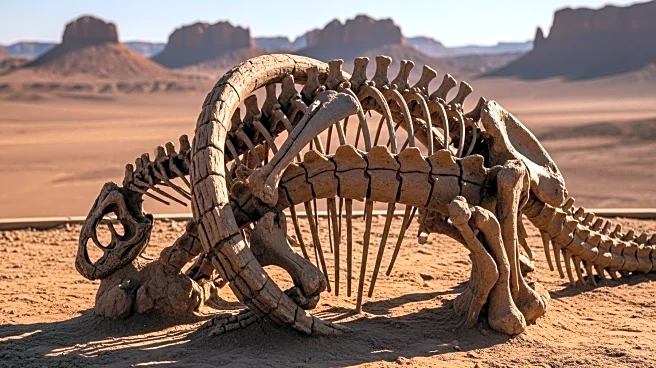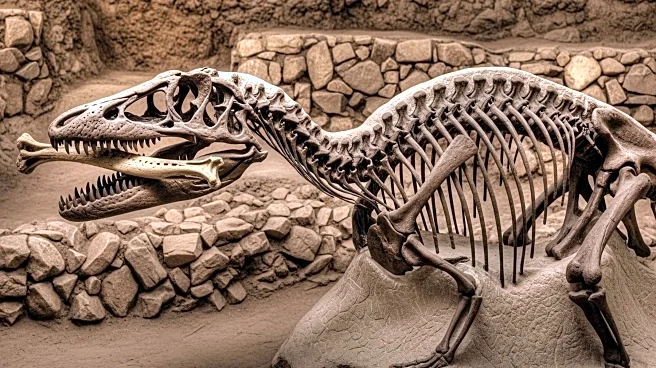What is the story about?
What's Happening?
Researchers from ETH Zurich, led by Professor Jordon Hemingway, have discovered tiny egg-shaped iron oxide stones known as ooids, which provide new insights into Earth's evolutionary history. These stones, resembling grains of sand, grow by accumulating layers as they move across the sea floor, incorporating organic carbon molecules into their structure. By examining these impurities, the team has traced the supply of organic carbon in the ocean back up to 1.65 billion years. Their findings, published in the journal Nature, reveal that between 1,000 and 541 million years ago, the ocean's carbon store was significantly lower than previously thought. This challenges existing explanations for major geochemical and biological events during that period, offering a new perspective on Earth's history.
Why It's Important?
The discovery of these ooids and their implications for Earth's carbon history are significant as they challenge long-held assumptions about the relationship between carbon levels, ice ages, and the development of complex life. The research suggests that the ocean contained 90 to 99 percent less dissolved organic carbon than today, contradicting previous beliefs that high carbon levels were linked to the emergence of complex life and ice ages. This new understanding could reshape theories about Earth's evolutionary processes and the role of carbon in the development of life. Additionally, the findings may have implications for understanding how life might evolve on other planets with similar conditions.
What's Next?
The research team suggests that new explanations are needed to understand the connections between ice ages, complex life, and oxygen increases. Lead author Nir Galili proposes that the emergence of larger organisms during the studied period led to faster sinking of marine snow, reducing the recycling of carbon particles in deeper ocean layers due to low oxygen levels. As oxygen accumulated in the deep sea, the carbon reservoir grew to its current volume. These insights could inform future studies on Earth's response to environmental disturbances, such as human-induced ocean warming and pollution, which are currently leading to declining marine oxygen levels.
Beyond the Headlines
The study's findings have broader implications for understanding Earth's resilience to environmental changes and the potential for similar processes to occur on exoplanets. As human activities continue to impact oceanic conditions, the historical data provided by these ooids could offer valuable lessons for predicting future ecological shifts. The research highlights the importance of considering geological and biological interactions in the context of climate change and environmental conservation efforts.
AI Generated Content
Do you find this article useful?


